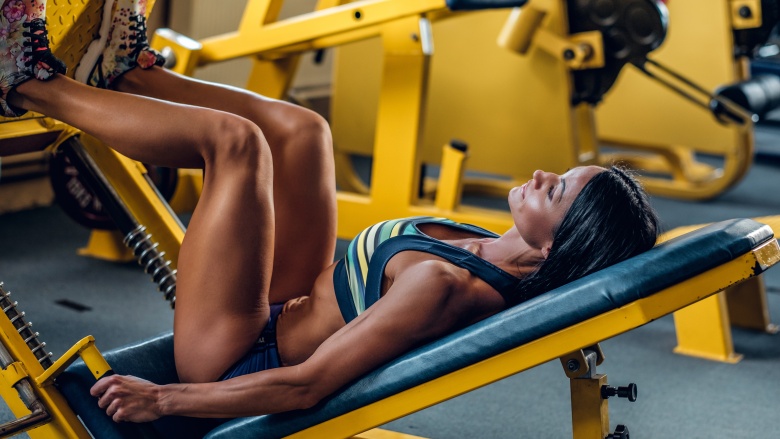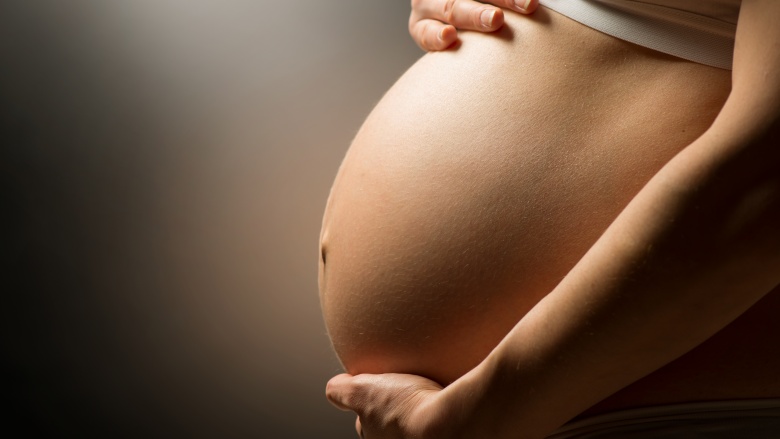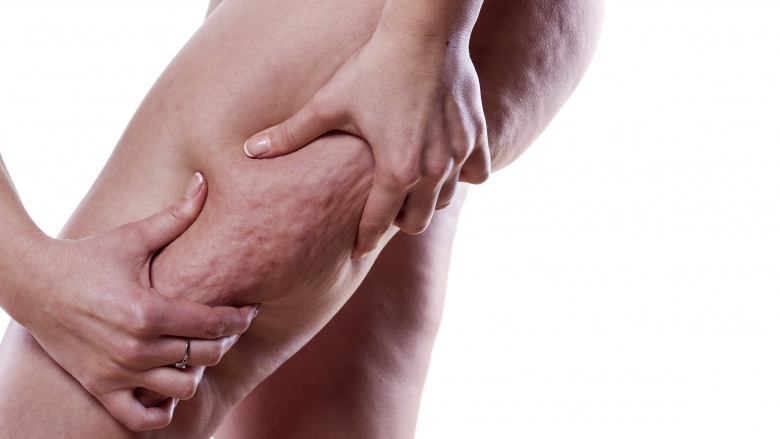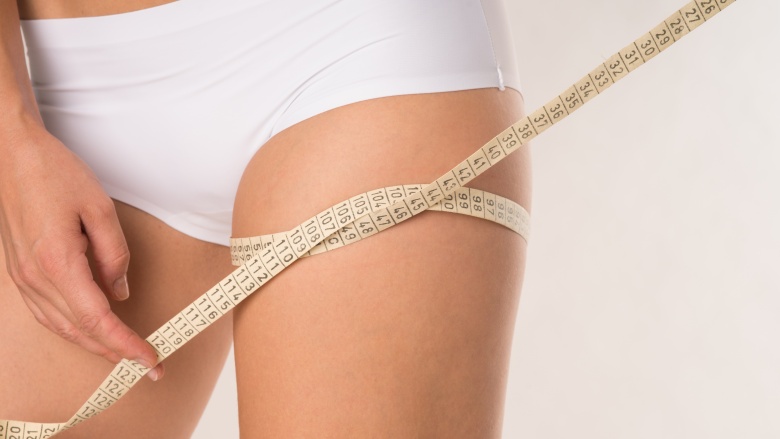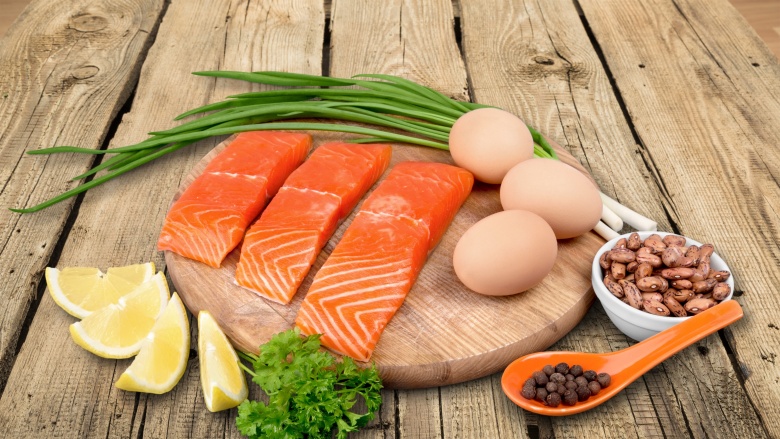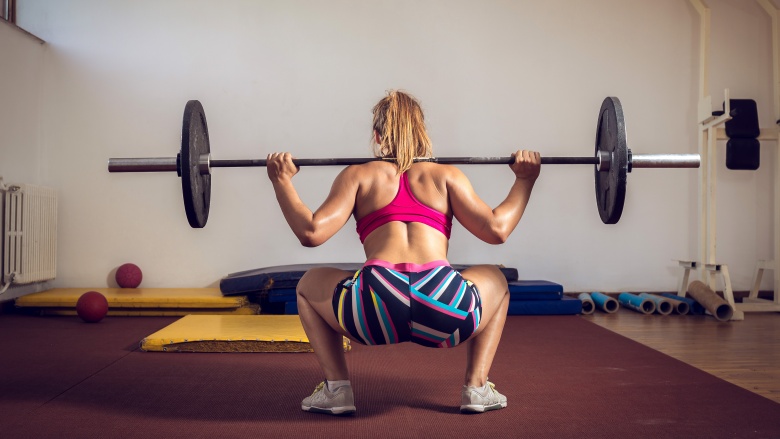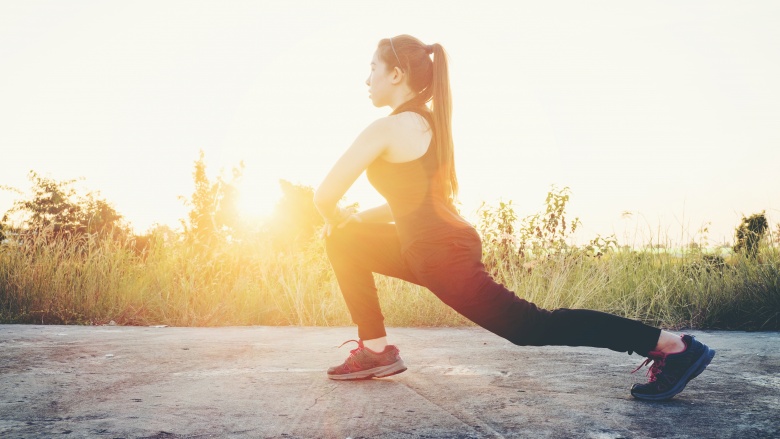7 Reasons You Just Can't Blast That Stubborn Leg Fat
If you've always wanted a pair of long, lean legs like a Radio City Rockette... well, hey, us too! But unless you've been blessed by the gam gods with legs that go on for days, it'll take some targeted effort to get your ideal below-the-waist physique — from torching excess fat to building gorgeous, sculpted curves where you want 'em. Below, we've rounded up seven things you should know before embarking on your journey to the Land of Perfect Pins.
Spot reduction is a myth
The bad news when it comes to blasting your body fat: You don't get to decide where your weight loss happens on a part-by-part basis. Enormous amounts of research have been devoted to exploring the concept of spot-specific fat loss in a specific area.
In one recent study, participants exercised just one of their legs, performing a whopping one thousand leg presses per workout session over a period of twelve weeks.If slimming down an individual body part were possible, this kind of targeted exercise would certainly do the trick. But that study reached the same conclusion as all its predecessors: The body will shed fat in response to a caloric deficit, the kind achieved through diet and exercise, but it's impossible to control where that fat comes from. In the leg press study, participants lost a pretty significant amount of fat — 10.2 percent, to be exact — in their upper extremities, suggesting that a high-rep training regimen (like a barre workout, for example) is a good bet for those who want to burn fat and build muscle. But the body part being worked out — their legs — retained more or less the same composition as when they started, with no significant difference between the trained leg and the control leg.
In short, if you want slimmer legs, you may have to lose a significant amount of weight from other parts of your body before the fat stores in your hips, thighs, or calves get their turn.
Leg fat is tied to fertility, making it tough to lose
The fat on your thighs (as well as your hips and rear end) is crucial for childbearing, which is one of the reasons your body clings to it at all costs. That's great news if you're trying to get pregnant, but not so much if you're looking to slim down below the waist. For those who are classified as medically overweight or obese, any fat loss regimen will likely see you lose weight in these areas. But if you're already quite lean, you may have to embark on a fairly extreme nutrition and training regimen in order to make your thighs smaller. And be cautious — because of the relationship between fat and fertility, if you get too lean, your menstrual cycle and overall reproductive health may be disrupted.
Even slim legs may not be free of cellulite
Leg fat, particularly on the backs of the thighs, often takes the form of cellulite, dimpled fat deposits that look like gravel or cottage cheese underneath the skin. Cellulite is incredibly common in women (about 90 percent of us have it), and reducing it is a frequently-cited desire among women trying to lose weight. Unfortunately, because cellulite results from the structure of your connective tissues and the thickness of your skin in addition to the sheer amount of fat you have overall, losing weight in your legs can make them smaller and shapelier but won't necessarily change the surface appearance of the essential fat left behind — and while topical treatments for cellulite exist, none of them can get rid of it completely. But that's okay: if elite athletes and Victoria's Secret models can make peace with their dimply thighs, then so can you.
Don't fret about your thigh gap (or lack thereof)
Despite what all those fitspiration boards on Pinterest may have led you to believe, whether or not you have a thigh gap isn't necessarily an indicator of how much leg fat you have. Your bone structure, particularly the set of your hips, makes a bigger difference. The wider your pelvis, the further the distance between your femurs, and the greater the gap between your thighs.
Ironically, that means slender women with boyish hips — the Kate Mosses of the world — are far less likely to be able to hashtag their fitspo selfies with #thighgap. So when you set out on your journey to the Land of Skinnier Skinny Jeans, just remember that even a pair of very slim thighs might still meet in the middle.
You need protein
Losing fat on your legs (or anywhere else) means eating at a deficit. When you consume fewer calories than you're burning, your body will turn to its fat stores to make up the difference — and when you maintain that deficit consistently over the course of weeks or months, the reduction in your body's fat stores translates to a visually slimmer physique. However, your low-calorie diet still needs to provide the building blocks your body needs to perform basic maintenance, particularly the essential amino acids you get by consuming protein.
If you're not eating enough protein-rich foods like meats, fish, cheese, and beans, your body will cannibalize its own meat — as in, your muscles — to get the nutrients it needs. That's bad news if you're looking to slim down, particularly on your bottom half; muscle is a major calorie-burner, which means that losing mass in your biggest muscle groups (the quads, hamstrings, and glutes) can really slow your metabolism, making it much harder to lose weight. And while losing muscle mass can translate to a reduction in your overall size, it'll also make your legs less shapely — and nobody wants that.
In fact, muscle makes a huge difference
It's a well-known saying among fitness professionals that weight loss happens in the kitchen — because shedding extra fat is largely about your diet. But for most of us, weight loss isn't the whole story when it comes to fitness goals. After all, we don't diet to achieve a specific numerical percentage of body fat; we do it to get a sculpted, shapely physique. And if your goals are aesthetic, then burning fat is only half the battle. As Jonathan Mielec, CFT and proprietor of Form from Function Fitness, explains, "Shape definitely effects perception of size. A balance of muscle gain and fat loss can dramatically change how body parts look."
In other words, factors like height, bone structure, and weight distribution might prevent you from ever having pins like a runway model, but building those muscles through weight training can make a noticeable improvement to your overall silhouette — and even create the illusion of longer, leaner legs. So if you've lost fat on your thighs and calves but still wish your gams were more shapely, don't shy away from adding exercises like squats, lunges, and calf raises to your lifting routine.
Diet and exercise alone might not be enough
As a woman, around ten percent of your total mass is made up of essential fat — so-called because it's, y'know, essential. Your body requires a certain amount of fat to keep functioning, and alas, that fat can be located in the place where you'd most like to lose it. So if you've been diligently dieting and exercising, and you're seeing results everywhere but your legs, you may not be able to lose that fat without also compromising your health (or resorting to a surgical method like liposuction.)
So does all of this info mean it's time to give up your dream of gorgeous gams? No way! Just be aware that it may not be as easy you think — you're going to have to work for it.

